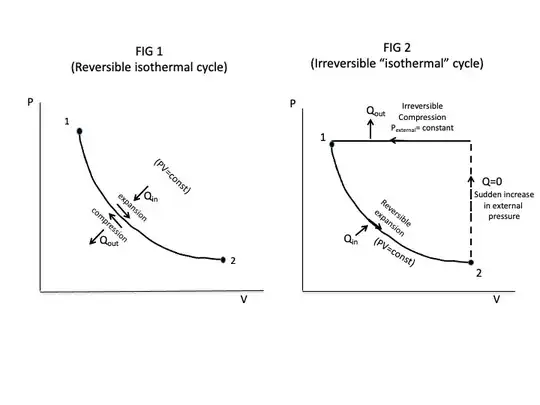It is impossible for any system to operate in a thermodynamic cycle and deliver a net amount of energy, by work, to its surroundings, while receiving energy by heat transfer from a single thermal reservoir.
The Kelvin–Planck statement does not rule out the possibility of a system developing a net amount of work from a heat transfer drawn from a single reservoir. It only denies this possibility if the system undergoes a thermodynamic cycle.
According to the Kelvin–Planck statement, a system undergoing a cycle while communicating thermally with a single reservoir cannot deliver a net amount of work to its surroundings. That is, the net work of the cycle cannot be positive. However, the Kelvin–Planck statement does not rule out the possibility that there is a net work transfer of energy to the system during the cycle or that the net work is zero. Thus, the analytical form of the Kelvin–Planck statement is: $W_\text{cycle} \le 0$. We associate the "less than" and "equal to" signs with the presence and absence of internal irreversibilities, respectively.
These are the statements mentioned in the book: FUNDAMENTALS OF ENGINNERING THERMODYNAMICS by Michael J. Moran and Howard N. Shapiro.
I have drawn these conclusions and have the following doubts:
CONCLUSIONS:
- It is possible for a system to develop a net amount of work due to heat transfer from a single reservoir, just that the system should not undergo a thermodynamic cycle.
- If the system undergoes a thermodynamic cycle, and exchanges heat only with a single reservoir, then the only condition is that the system undergoing a thermodynamic cycle cannot deliver net amount of work (positive) to the surroundings. This arrangement can have a negative net work (work received, hence negative) or zero net work.
Are these conclusions correct?
DOUBTS:
Does the Kelvin-Planck statement not comment on a system, which is not undergoing a thermodynamic cycle, which is exchanging heat only with a single reservoir, and about the conversion efficiency of heat to work? (Example: gas contained in a piston cylinder arrangement, which is insulated). (Please explain using this example as well.)
If the second conclusion that I have drawn is correct, what systems interact with a single reservoir, either by absorbing some work, or with no net work?
